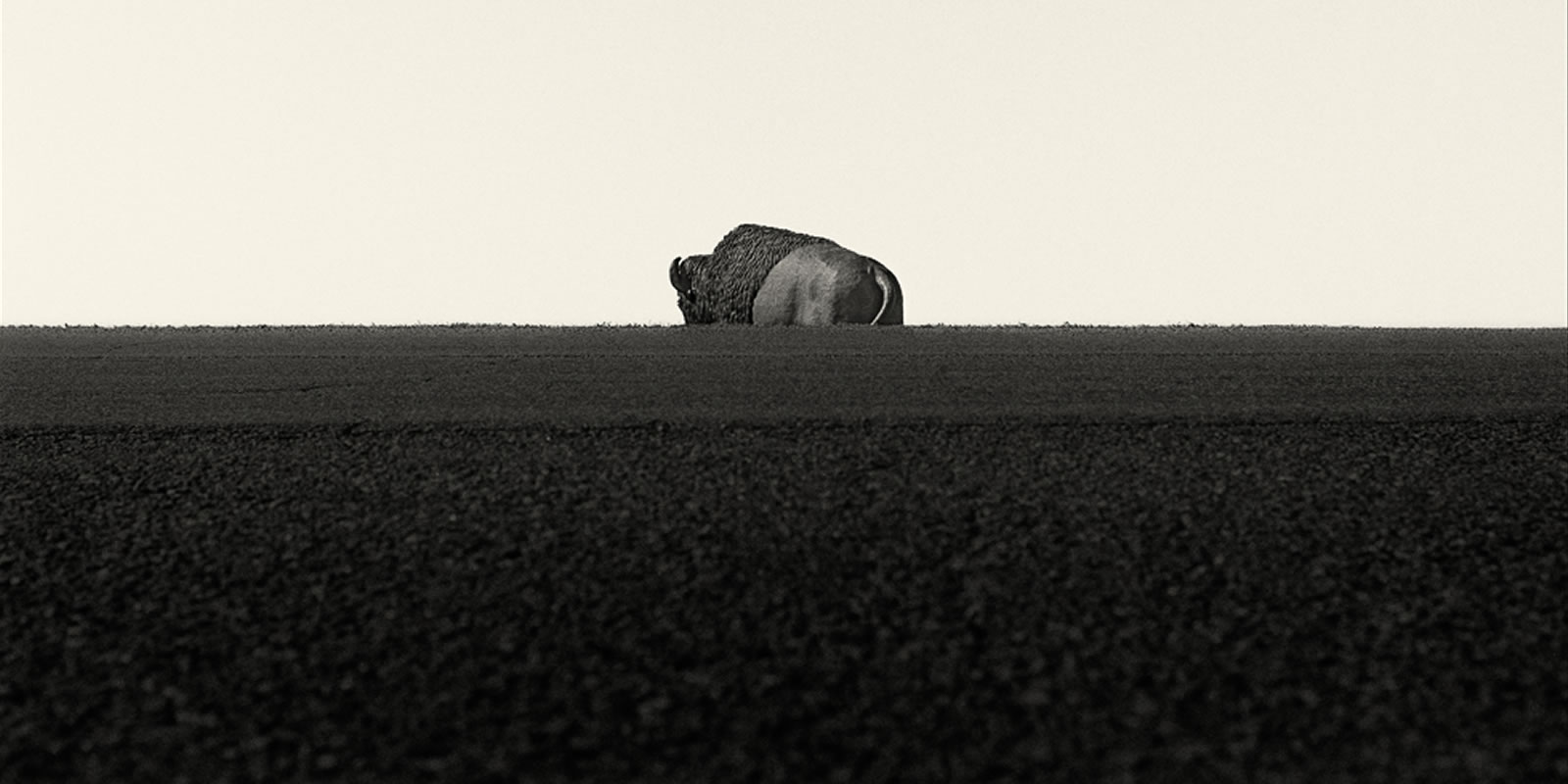This article was first published by Jason Baldes in the High Country News on October 5, 2020.
Buffalo were originally decimated to starve Indigenous peoples; now, their absence is starving out the land.
Buffalo do not exist on the landscape the same way other wild animals do. They affect the environment, as well as human beings, in an important and unique manner. Before we can protect them for future generations, we need to understand their history.
Buffalo and Native peoples are deeply intertwined. We both survive on the remnants of once-vast territories. Buffalo live in parks, refuges and private ranches, while Native people were forced onto reservations to control and subjugate the tribes.
We Eastern Shoshone call ourselves “Gweechoon Deka,” or buffalo eaters, and we have deep cultural connections to the animal. Buffalo used to dominate grassland and prairie ecosystems across the Western U.S., with an estimated 30 to 60 million animals roaming free. These great herds had positive ecological impacts on the land they grazed, not only on its soil, water and plant life, but on a variety of other animals, even insects. All these creatures lived in synergy, benefiting their habitat.
Buffalo are considered a keystone species, critical to the environment, meaning that without their presence the ecosystem is dramatically different. In places where buffalo have been restored, their unique characteristics and behavior promote an increase in biodiversity. When buffalo wallow, they create ephemeral pools and micro-depressions in the landscape that serve as a water source for other animals. Their dust-bathing behavior encourages seed dispersal. Certain species of birds line their nests with buffalo hair, keeping their eggs at the appropriate temperature for incubation.
Sadly, when railroads cut through the Great Plains in the 19th century, buffalo were killed in large numbers for sport and in order to subjugate the Native people who relied on the animal. Today, buffalo remain a vital piece to the well-being not only of Indigenous communities like my own, but also of the land itself. That’s why we’re working to bring them back to their rightful place on the landscape.
But before we can make real progress in buffalo restoration and conservation, we need a paradigm shift in how we collectively “see” buffalo. Today, the animals are generally confined by fences or prescribed boundaries. The people who travel to see them are probably unaware that most are privately managed and not considered “wild.”
We have forgotten how to see buffalo in their habitat, the way we see pronghorn, moose, elk and other wildlife species. This is largely because of land-use policies, politics and the influence of the agriculture industry on how public lands are managed.
For Natives, the restoration of buffalo is as much about healing people and reviving our culture as it is about healing the land.
The policies’ negative repercussions affected how buffalo and Indigenous peoples relate. Federal policies diminished tribal rights and ownership of lands in order to open the Western U.S. so that “surplus” tribal lands could be sold to white settlers. The buffalo economy, life’s commissary for Native peoples, was wiped out as a result, and Native peoples could no longer hunt and harvest buffalo or use the animal for traditional and cultural purposes. Instead, agriculture was promoted, and large tracts of land in the West were made available for cattle businesses, many of which are still operating today.
The federal government often manages public land for industry, prioritizing mineral extraction and cattle grazing rather than ecological integrity or restoration. Many who oppose buffalo restoration fear that the animals will transmit disease to cattle. States are required to certify livestock as disease-free, and ranchers worry that this could economically impact their bottom line. But there has never been a documented case of buffalo transferring brucellosis to cattle. There is, however, evidence that elk have transmitted the disease, and yet we still see elk living freely on the landscape. We want elk to continue to thrive in the West. We simply believe buffalo deserve the opportunity to do the same.
We need to partner with tribal nations to create additional buffalo herds on their lands. Tribal quarantine programs demonstrate that genetically pure, disease-free buffalo can roam safely, and that healthy animals can be supplied to those who want establish their own herds. For Native people, the restoration of buffalo is as much about healing people and reviving our culture as it is about healing the land.
The Department of the Interior recently announced the Bison Conservation Initiative, a new cooperative effort that will enact conservation strategies for the wild American bison over the next 10 years. This initiative affirms a commitment to the shared stewardship of wild bison in cooperation with states, tribes, nonprofits and other stakeholders. It also commits to establishing and maintaining large, wide-ranging bison herds on large landscapes, where their role as ecosystem engineers can shape healthy and diverse ecological communities.
This is a big step in the right direction. With continued commitment from government entities, expanded capacity for quarantine facilities, and, above all, a paradigm shift in how we see bison, we may truly be able to restore and treat these animals as true Western wildlife.
Jason Baldes is the tribal buffalo coordinator for the National Wildlife Federation and an Eastern Shoshone tribal member. This opinion article was first published by Jason Baldes in the High Country News on October 5, 2020.

